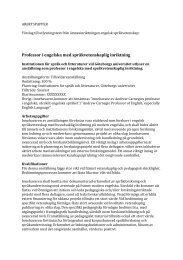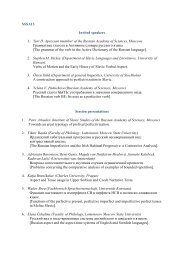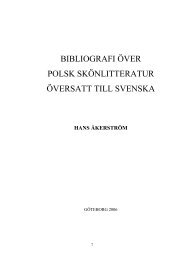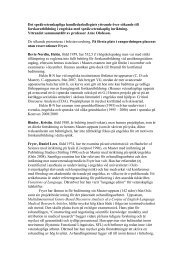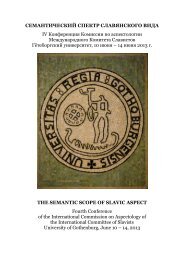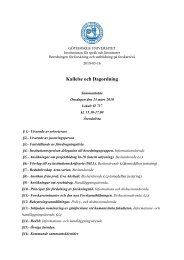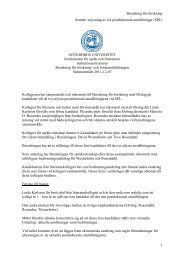since there are many Asians and Pacific Islander residents from an array of backgrounds, someof whom (such as in the case of the Niueans) are found in greater numbers in New Zealand than“back home.” The second example, Multiculturalism, is often represented through the use of suchcommon metaphors as a “melting pot” or “salad bowl.” In this conceptualization, society as awhole is believed to benefit from the contributions of diverse cultural groups who collaborate toraise the collective achievement, forming an even stronger new culture through a synergy thatto varying degrees may either result in some loss of the distinctive original cultures (as in themelting pot metaphor) or overall maintenance of heritage (as in the salad bowl metaphor). Somescholars and public figures use these kinds of conceptualizations in debates regarding contemporarysociety in the United States, Australia, Brazil, Malaysia, and Khazakhstan, for example.Interculturalism is a concept gaining currency of late in western Europe, where many rejectthe idea of ever permitting the citizenry to become so ethnically and racially diverse as NorthAmerica, yet acknowledge that the increasingly obvious presence of large immigrant populationsfrom such places as Africa and the Middle East requires some modifications to public policy.Interculturalism seems to entail an orderly and respectful recognition of difference that leadsto some alteration of trajectory on the part of both parties, but perhaps without major transformation.Transculturalism, on the other hand, seems to consist of a free and uninhibited nexusof multiple influences with some risk of “graying” (or lessening of original distinctiveness), yetleading to eventual transformation, while generally retaining some of the original characteristics,illustrated here via slight modifications to color but not trajectory. These Four <strong>Cultural</strong>istConceptions may prove useful in any conversations regarding the ultimate purpose of culturaltranslation within academia. Scholars of cultural translation are presumably motivated by thedesire to attain improvements in cross-cultural understanding, yet there is likely to be an arrayof diverse visions regarding what ultimately may be the outcome of a significant lessening of theepistemological barriers and non-empathetic tensions between cultural groups that give rise tosuch profound allegories as the Tower of Babel and have even led to countless unnecessary andabominable wars throughout history. The promotion of cross-cultural understanding has arisenas a topic on the landscape of music education in Japan across recent years, and is likely to be asubject of continued debate across a broad range of fields far into the future. 20One important domain in which cultural translation is likely to be especially prominent is thatof fusion (or hybrid) music genres and specific examples of musicians and ensembles that seekto blend influences from culturally distinct sources. Until recently, research on hybrid musictraditions has “generally implied that they lacked authenticity or were degenerate and oversentimental,having been influenced only by the ‘lowest’ forms of Western music.” 21 However, acrossthe past decade, hybridity has arisen as a particularly important area of music research. EthnomusicologistTina Ramnarine has recently observed that by “moving beyond simple understandingsof hybridity as musical cultures in contact that result in ‘new’ musical expressions we move20 Mitsuko Isoda, Ongaku Kyoikuto Tabunkashugi [Music Education and Multiculturalism] (Otsu: Sangaku,2010). Also, for examples of how the power of music has been used in conflict resolution, see Olivier Urbain,ed., Music and Conflict Transformation: Harmonies and Dissonances in Geopolitics (London: I.B. Tauris,for Toda Institute for Global Peace and Policy Research, 2008).21 Margaret J. Kartomi, “The processes and results of musical culture contact: A discussion of terminologyand concepts,” Ethnomusicology, 25(2), 227-249 (1981); p. 227.<strong>Cultural</strong> translation and Music27
has arisen as a particularly important area of music research. Ethnomusicologist Tina Ramnarine hastowards recently politically observed articulated that by “moving readings beyond of social simple relations understandings creative of hybridity processes.” as musical 22 Thus, cultures hybriditycontact requires that result an especially in „new‟ musical broad expressions view in order we to move grasp towards all relevant politically factors, articulated which is readings why the ofinsecond social part relations of this and model creative is relatively processes.” wide 22 Thus, in its hybridity scope, encompassing requires an especially five domains. broad view in order tograsp all relevant factors, which is why the second part of this model is relatively wide in its scope,The second part of the model is entitled Five Domains of <strong>Cultural</strong> Translation via Music, whichare encompassing identified as five follows domains. (see below): A) Technological Adaptations, B) Idiomatic Conventions, C)Aesthetic Notions, D) Creative Practices, and E) Receptive Contexts.The second part of the model is entitled Five Domains of <strong>Cultural</strong> Translation via Music, which areidentified as Model follows 2. (see Five below): Domains A) Technological of <strong>Cultural</strong> Adaptations, Translation B) Idiomatic via Conventions, Music C)Figure 2: Model-Five Domains of <strong>Cultural</strong> Translation via MusicAesthetic Notions, D) Creative Practices, and E) Receptive Contexts.What is meant by conceptualization according to these five domains in the cultural translationModel 2. Five Domains of <strong>Cultural</strong>Translation via MusicA. TechnologicalAdaptationsof music (or, alternatively, the musical translation of music)? Consider the following descriptions:E. ReceptiveContextsB. IdiomaticConventionsD. CreativePracticesC. AestheticNotions28Figure 2: Model-Five Domains of <strong>Cultural</strong> Translation via MusicA. Technological Adaptations. This refers to an array of tools and associated techniques, includinginstruments, notation systems, sound media (synthesizer programming of nonsampledsounds or even samples, etc.) used by musicians.What is meant by conceptualization according to these five domains in the cultural translation ofB. Idiomatic Conventions. This refers to actual approaches to the use of musical sounds, includingmusic (or, alternatively,tonal, rhythmic,the musicaltextural,translationtimbral,ofandmusic)?formalConsidersystems.the following descriptions:C. Aesthetic Notions. This includes holistic approaches and expressive devices that embodycharacteristics regarded to sound appropriate and “good.” This does not necessarily re-22 Tina quire K. Ramnarine, new techniques “Musical (although performance it often does); in the diaspora: Rather, it Introduction,” can merely consist Ethnomusicologyof new ways ofForum, 16(1), 1-17 (2007), p.7.22 Tina K. Ramnarine, “Musical performance in the diaspora: Introduction,” Ethnomusicology Forum, 16(1),1-17 (2007), p.7.David G. Hebert
- Page 1: Cultural TranslationsProceedings of
- Page 4 and 5: PrefaceThe idea of organizing a wor
- Page 6 and 7: ContentsAcknowledgementIIPrefaceIII
- Page 8 and 9: Literature and Transculturality:Som
- Page 10 and 11: agenda of Herder, which was to figh
- Page 12 and 13: nomenon. However, until long into t
- Page 14 and 15: Tawada’s work appeared in Swedish
- Page 16 and 17: multiple interpretations. Japan is
- Page 18 and 19: Cultural Translation between Tradit
- Page 20 and 21: George P. Murdock illustrated the p
- Page 22 and 23: ancestor of the Maori arrived in Ao
- Page 24 and 25: nal names do not necessarily have.
- Page 26 and 27: One of the functions of ‘cultural
- Page 28 and 29: PRELUDEIn 2003, an original artisti
- Page 30 and 31: planted, adopted and fused with ind
- Page 32 and 33: liest known written clues regarding
- Page 36 and 37: listening to and evaluating sounds
- Page 38 and 39: Ensemble, and the Moscow Pan-Asian
- Page 40 and 41: temporary Finnish folk music. 29I a
- Page 42 and 43: Although some space for improvisati
- Page 44 and 45: whom have devoted many years to ser
- Page 46: POSTLUDEBy way of conclusion, allow
- Page 49 and 50: IntroductionThe aim of this paper i
- Page 51 and 52: to discuss what role Japan was to p
- Page 53 and 54: I may be allowed henceforth to use
- Page 55 and 56: program was to promote and help stu
- Page 57 and 58: 50different of that of Millán -Ast
- Page 59 and 60: most impracticable people in the ea
- Page 61 and 62: intending to give the Book a quasi
- Page 63 and 64: understood by the West on a time wh
- Page 65 and 66: FUJIWARA Masahiko. (2008) Kokka no
- Page 67: - (2002) Cultural light, political
- Page 70 and 71: Translation, or better, linguistic
- Page 72 and 73: one may not expect anything other t
- Page 74 and 75: as Murakami opts for a globalized v
- Page 76 and 77: market. 17 Another indispensable to
- Page 78 and 79: (This is part of my doctoral thesis
- Page 80 and 81: elieve advances man’s progress he
- Page 82 and 83: ender the New Testament into Japane
- Page 84 and 85:
a synonym for kami. The latter is a
- Page 86 and 87:
The American school text is in the
- Page 88 and 89:
Willson Reader 46 T73 47I will not
- Page 90 and 91:
Gentlzer, Edwin & Tymoczko, Maria 2
- Page 92 and 93:
Tea ceremony or tea cult?Translatin
- Page 94 and 95:
Company (VOC), men came from differ
- Page 96 and 97:
H. Stolpe gathered items in Japan f
- Page 98 and 99:
simple presentations had negative i
- Page 100 and 101:
theticism, with its manifold bearin
- Page 102 and 103:
Kumakura, Isao (1980) 近 代 茶
- Page 104 and 105:
1. Introduction and aim of the pape
- Page 106 and 107:
main character and the caller doesn
- Page 108 and 109:
not” and ”at present” that ha
- Page 110 and 111:
match this name, a sea as artificia
- Page 112 and 113:
I John Gabriel BorkmanHenrik Ibsen
- Page 114 and 115:
his dream during the 1870s, when ca
- Page 116 and 117:
make a decision. But it turns out t
- Page 118 and 119:
Ôgai’s change of translation str
- Page 120 and 121:
Behind every utterance lies two mot
- Page 122 and 123:
a large group of persons be gathere
- Page 124 and 125:
The “Territory of Translation”
- Page 126 and 127:
八 十 日 間 世 界 一 周 :
- Page 128 and 129:
heuristic tools, especially conside
- Page 130 and 131:
Left: Photo of Kawashima Chūnosuke
- Page 132 and 133:
Burlington Gardens is in London (Ro
- Page 134 and 135:
門 アリ 入 リテ 見 レバ
- Page 136 and 137:
scene seems to be merely one of man
- Page 138 and 139:
Niwa Jun’ichirō’s Spring Tale
- Page 140 and 141:
The text is full of detailed descri
- Page 142 and 143:
where the narrative voice does not
- Page 144 and 145:
The reason the “territory of tran
- Page 146 and 147:
Translating the Trip Around the Wor
- Page 148 and 149:
ForwordI have been working on my do
- Page 150 and 151:
clining though. By the end of 1980
- Page 152 and 153:
幸 い 神 の 怒 りは 鎮 ま
- Page 154 and 155:
The Public Sphere as Deliberation o
- Page 156 and 157:
and absence of hierarchy would have
- Page 158 and 159:
was used much like we would use “
- Page 160 and 161:
outcasts and bandits - were suppose
- Page 162 and 163:
cal sense, the arena where particip
- Page 164 and 165:
society” and in which “there wa
- Page 166 and 167:
sic formulations, the public sphere
- Page 168 and 169:
はじめに日 本 統 治 下 の
- Page 170 and 171:
似 地 一 下 一 下 拽 那 鼻
- Page 172 and 173:
ということから、 古 丁
- Page 174 and 175:
の「 序 」で、 大 東 亜
- Page 176 and 177:
3.1 翻 訳 と 満 洲 国 語 政
- Page 178 and 179:
取 り 入 れを 主 張 する
- Page 180 and 181:
文 化 の 翻 訳 としての「
- Page 182 and 183:
史 性 にも 留 意 すべきだ
- Page 184 and 185:
て、 渦 巻 きよりほかは
- Page 186 and 187:
変 わらないということも
- Page 188 and 189:
訳 語 と 新 語 から 見 る
- Page 190 and 191:
しは「 無 為 」や「 本 性
- Page 192 and 193:
思 想 を 基 礎 として、
- Page 194 and 195:
って「 物 理 上 哲 学 」
- Page 196 and 197:
し、まさにはこの 時 期
- Page 198 and 199:
意 譯 : 理 學 、 性傅 汛
- Page 200 and 201:
柴 田 昌『 增 補 訂 正 英
- Page 202 and 203:
一 八 七 七 年 、 文 部 省
- Page 204 and 205:
日 中 友 好 の 象 徴 「 鑑
- Page 206 and 207:
と 指 摘 した。成 吉 思
- Page 208 and 209:
をあげている。さらにま
- Page 210 and 211:
に 請 ひて 出 家 を 求 む
- Page 212 and 213:
この 時 奉 請 の 十 師 等
- Page 214 and 215:
歴 史 小 説 『 天 平 の 甍
- Page 216 and 217:
点 」が 生 じたと 指 摘
- Page 218 and 219:
まず、 昨 今 、 活 発 に
- Page 220 and 221:
2、 従 来 の 比 較 文 学 (c
- Page 222 and 223:
普 遍 理 論 を 適 用 し、
- Page 224 and 225:
ス・テグネル(Esaias Tegnér,
- Page 226 and 227:
に 満 ちる「 生 命 」に
- Page 228 and 229:
う 形 をとって 展 開 した
- Page 230:
学 が 大 学 で 展 開 して



